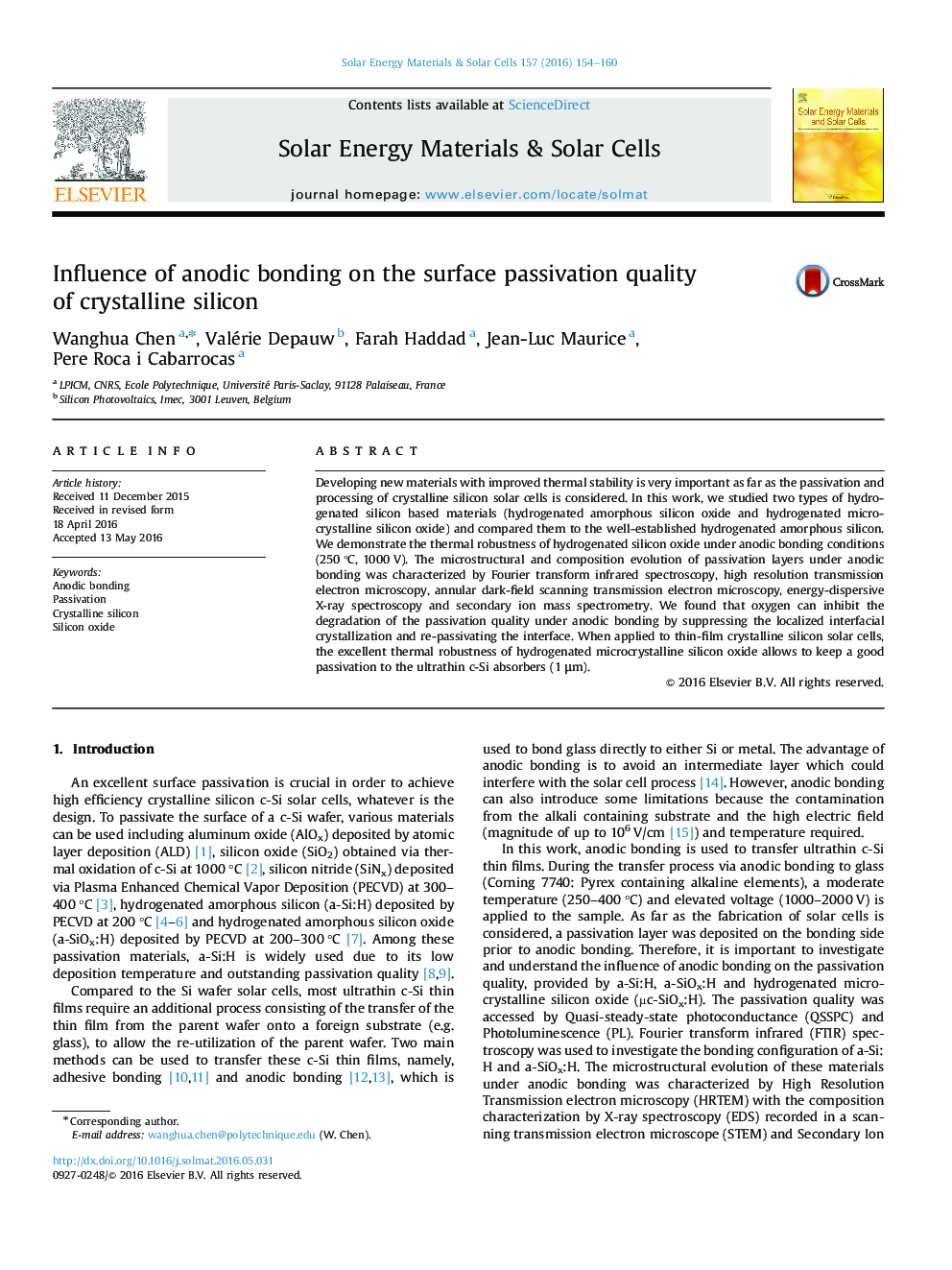| Article ID | Journal | Published Year | Pages | File Type |
|---|---|---|---|---|
| 6534557 | Solar Energy Materials and Solar Cells | 2016 | 7 Pages |
Abstract
Developing new materials with improved thermal stability is very important as far as the passivation and processing of crystalline silicon solar cells is considered. In this work, we studied two types of hydrogenated silicon based materials (hydrogenated amorphous silicon oxide and hydrogenated microcrystalline silicon oxide) and compared them to the well-established hydrogenated amorphous silicon. We demonstrate the thermal robustness of hydrogenated silicon oxide under anodic bonding conditions (250 °C, 1000 V). The microstructural and composition evolution of passivation layers under anodic bonding was characterized by Fourier transform infrared spectroscopy, high resolution transmission electron microscopy, annular dark-field scanning transmission electron microscopy, energy-dispersive X-ray spectroscopy and secondary ion mass spectrometry. We found that oxygen can inhibit the degradation of the passivation quality under anodic bonding by suppressing the localized interfacial crystallization and re-passivating the interface. When applied to thin-film crystalline silicon solar cells, the excellent thermal robustness of hydrogenated microcrystalline silicon oxide allows to keep a good passivation to the ultrathin c-Si absorbers (1 μm).
Related Topics
Physical Sciences and Engineering
Chemical Engineering
Catalysis
Authors
Wanghua Chen, Valérie Depauw, Farah Haddad, Jean-Luc Maurice, Pere Roca i Cabarrocas,
